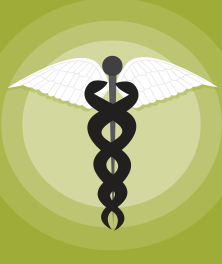Contact Information

- Division
- Business and Technology
- Dean
- Jay Hester (Interim)
- Associate Dean
- Darlene Jackson

- Division Office
- B 3, Rocklin Campus
- Department Office
- Room 205, Roseville Gateway Center

- Department Phone
- (916) 781-6250
Overview
Health Science courses are primarily designed as first responder basic life support training for the fire service, emergency medical services and health care professions. Other courses in this area are intended to improve or update the skills of individuals providing emergency and primary health care services.
Faculty
David B. Sinclair
Professor, Health Sciences
A.A., Sierra College
B.S., University of San Francisco
M.P.A., University of San Francisco
Health Sciences/Emergency Medical Technician Advisory Committee
- Dana Bentley, R.N., M.I.C.N., C.E.N., Mercy San Juan Medical Center
- Greg Cavolt, Captain, Roseville City Fire Department
- Shani Cornell, Captain, Sacramento Metropolitan Fire Department
- Bill Daniels, Assistant Chief, Sacramento Metropolitan Fire Department
- Bridget Farren, Vice Principal, Del Oro High School
- Kathy Finney, Division Chief, Roseville City Fire Department
- Brian Gonsalves, Captain, Sacramento Metropolitan Fire Department
- Chris Greene, Captain, Sacramento Metropolitan Fire Department
- Matt Lauchner, Captain, Roseville City Fire Department
- Rob Riley, Operations Supervisor, Sierra Nevada Ambulance
- Edward Silvas, Paramedic, American Medical Response
- James Summers, Fire Chief, Rocklin City Fire Department
- Heath Taylor, Firefighter, Rocklin City Fire Department
Health Science
AS Degree
[Pending approval from the Accrediting Commission for Community and Junior Colleges (ACCJC). UPDATE: Effective March 29, 2017, the ACCJC approved this degree.]
The curriculum in Health Science focuses on providing a broad base of knowledge and skills to support students’ development into competent health care professionals. The objective of the degree is to provide a foundation for continued study in Health Science or related field at a four-year college or university and for employment in the healthcare fields. Students will develop a breadth of understanding and skills in health science, human health and human physiology. The curriculum encompasses courses that are relevant to many healthcare careers including: health administration, occupational therapy, environmental health, clinical laboratory, dental hygiene, paramedic, registered nursing, respiratory therapy, physical therapy, and physician's assistant. For the degree, students must fulfill the following major requirements with grades of “C” or better, complete a minimum of 60 degree-applicable semester units (12 of which must be completed at Sierra College) with a grade point average of at least 2.0, and complete one of the following general education patterns:
- Associate Degree Requirements;
- California State University General Education Breadth pattern; or
- Intersegmental General Education Transfer Curriculum (IGETC) .
Required Courses
| Code | Title | Units |
|---|---|---|
| BIOL 0005 | Human Anatomy | 4-5 |
| or BIOL 0007A & BIOL 0007B | Human Anatomy I and Human Anatomy II | |
| BIOL 0006 | Human Physiology | 5 |
| CHEM 0002A | Introduction to Chemistry I | 5 |
| HSCI 0002 | Emergency Medical Technician | 6.5 |
| HSCI 0003 | Medical Terminology | 3 |
| MATH 0013 | Elementary Statistics | 4 |
| Select 6-10 units from the following: | 6-10 | |
| Microbiology | ||
| Microbiology I and Microbiology II | ||
| Financial Accounting I | ||
| Financial Accounting II | ||
| Introduction to Chemistry II | ||
| Principles of Macroeconomics | ||
or ECON 0001B | Principles of Microeconomics | |
| Emergency Medical Responder | ||
| Paramedic Preparatory Training | ||
| Principles of Nutrition | ||
| Basic Concepts in Physics | ||
| General Physics I and General Physics I Laboratory | ||
| General Principles of Psychology | ||
| Psychology of Death and Dying | ||
| Alcohol, Drugs and Society | ||
| Total Units | 33.5-38.5 | |
Courses
Understanding course descriptions
HSCI 0002. Emergency Medical Technician
Units: 6.5
Prerequisite: Students must be 18 years of age at start of course; provide two (2) negative TB tests two-step PPD process, or a negative chest x-ray; provide proof of immunizations for Mumps, Measles, Rubella (MMR); Varicella zoster-vaccination or positive titer; Hepatitis B status screening or signed declination; Diphtheria, Tetanus and Pertussis (Tdap); current influenza vaccine; provide drug screen test demonstrating the absence of evidence of controlled substance use; and provide criminal background screening satisfying the requirements of the State EMS Authority and EMT program clinical providers
Corequisite: Concurrent enrollment in HSCI 0012 to complete mandated Bloodborne Pathogen and Infection Control Training and American Heart Association (AHA) Basic Life Support/CPR certification for Healthcare Providers
Advisory: Completion of HSCI 3, HSCI 7 or BIOL 55 with grades of "C" or better; eligibility for ENGL 11
Hours: 166 (104 lecture, 38 skills laboratory, 24 field clinical laboratory)
Provides knowledge and critical thinking skills necessary to deliver Emergency Medical Care in a prehospital environment. Covers legal and moral aspects, scene safety, primary and secondary patient assessments, intervention and stabilization skills, proper use of emergency medical equipment, awareness of bloodborne pathogens and communicable diseases, recognizing signs and symptoms, and pathophysiology of medical emergencies and traumatic injuries. Includes practical hands-on skills training and interactive simulations. Clinical experience is an assigned field ride-along and/or clinical hospital observation. Attendance and participation are mandatory; a cumulative score of 80% on all written quizzes and exams, and passing score on all practical skills testing are required for successful course completion. Meets updated National Education Standards for EMT curriculum, and all requirements of the California Code of Regulations Title 22, the California EMS Authority and the National Registry of Emergency Medical Technicians (NREMT). Upon successful completion, student is eligible to take the NREMT EMT examination and qualify for a California State EMT certification. (CSU)
HSCI 0003. Medical Terminology
Units: 3
Hours: 54 lecture
Comprehensive overview of the medical language using a systems oriented approach of the human body. Covers the formation, spelling, correct pronunciation, and proper usage of common medical terms and abbreviations. The terminology is relative to the medical applications used within a wide variety of health care professions. Course meets the prerequisite requirements of numerous allied health care training programs, and is highly recommended as a preparatory course for EMT, Paramedic and Nursing programs. (CSU)
HSCI 0007. Emergency Medical Responder
Units: 3
Hours: 72 (54 lecture, 18 laboratory)
Provides theory and practical skills training required to be certified as an EMR-Emergency Medical Responder. Comprehensive training includes oxygen therapy and delivery, basic airway adjuncts, positive pressure ventilation, bleeding control, extremity splinting and spinal immobilization. Emphasizes systematic patient assessment, critical thinking and medical interventions at the first responder level. Meets the National and State requirements for certification as an Emergency Medical Responder. The American Heart Association Basic Life Support for the Health Care Provider CPR card, and an Emergency Medical Responder Certificate of Completion will be issued with a grade of "C" or better. Highly recommended as a preparatory course prior to enrolling in HSCI 2. (CSU)
HSCI 0012. Professional CPR and Infection Control for the EMT
Units: 0.5
Corequisite: Concurrent enrollment in HSCI 0002
Hours: 16 (10 lecture, 6 activity)
Meets the mandated professional CPR training requirements for students enrolled in the Emergency Medical Technician program. Provides the American Heart Association (AHA) Basic Life Support/CPR certification for Healthcare Providers. Also provides mandated training for recognizing risks of bloodborne pathogens, infection control, body substance isolation (BSI), and personal protection equipment in accordance with OSHA standard 29 CFR 1910.1030 specific to the EMT and healthcare professional. Training in proper body mechanics of patient movement and lifting techniques, proper operation of patient gurneys during emergency and non-emergency situations. (not transferable)
HSCI 0050. Paramedic Preparatory Training
Units: 3.5
Prerequisite: Completion of HSCI 2 with grade of "C" or better; must be currently certified as an EMT in the State of California OR eligible for a National Registry Certification
Hours: 80 (60 lecture, 20 laboratory)
Introduces the knowledge and critical thinking skills necessary to prepare for a paramedic program. Course is assessment based with focus on EMT and paramedic interventions; EKG recognition and interpretation; pharmacology; advanced airway management; IV and IO fluid and drug administration; basic anatomy, physiology and principles of pathophysiology; introduction to local, state and national ALS protocols. Practical skills lab sessions focus on improving patient assessment techniques, realistic case study scenarios, and introduction to paramedic ALS skills and interventions. Course format is interactive and simulates the intense pace and discipline required of an approved paramedic program curriculum. Student participation, passing of written exams and practical skills assessments, required for successful completion. Meets the mandated EMT transition requirements of the National Registry of Emergency Medical Technicians (NREMT) and the gap curriculum identified by the National Association of state EMS officials (NASEMSO). (CSU)
HSCI 0600. Emergency Medical Technician Continuing Education
Unit: 1
Prerequisite: Must be eligible for certification or re-certification as an EMT in the State of California
Hours: 24 (16 lecture, 8 laboratory)
Provides 24 hours of continuing education required for state re-certification as an Emergency Medical Technician (EMT). Reviews current standards for airway management and ventilation, patient assessment, cardiac care and resuscitation, injury management and stabilization, legal and ethical issues, vital signs, assisting with medication administration, and review of the updated and optional EMT scope of practice. Students update their psychomotor skills and demonstrate proficiency in organized skills labs. Students that successfully complete the course receive a certificate of completion. May be repeated for credit to meet legally mandated continuing education and re-certification requirements. (pass/no pass grading) (pass/no pass grading) (not degree applicable)
Program Student Learning Outcomes (PSLOs)
- Demonstrate and confirm knowledge of current industry standards by successfully completing all course requirements and successfully passing the certifying written examination of the National Registry of Emergency Medical Technicians.
- Demonstrate effective and clear communication skills required for patient care, completing critical skills and incident management, using both verbal and written medical summarizations.
- Demonstrate ability to perform a primary assessment on a medical or trauma patient, manage a simulated emergency scenario, and determine the appropriate critical care interventions.
- Determine the role of legal, ethical, and professional standards of conduct within the Emergency Medical Services and other health care professions.
- Demonstrate proficiency of all required practical skills as mandated to qualify for the National Registry of Emergency Medical Technicians Certification and for EMT and EMR licensing with the State of California.



